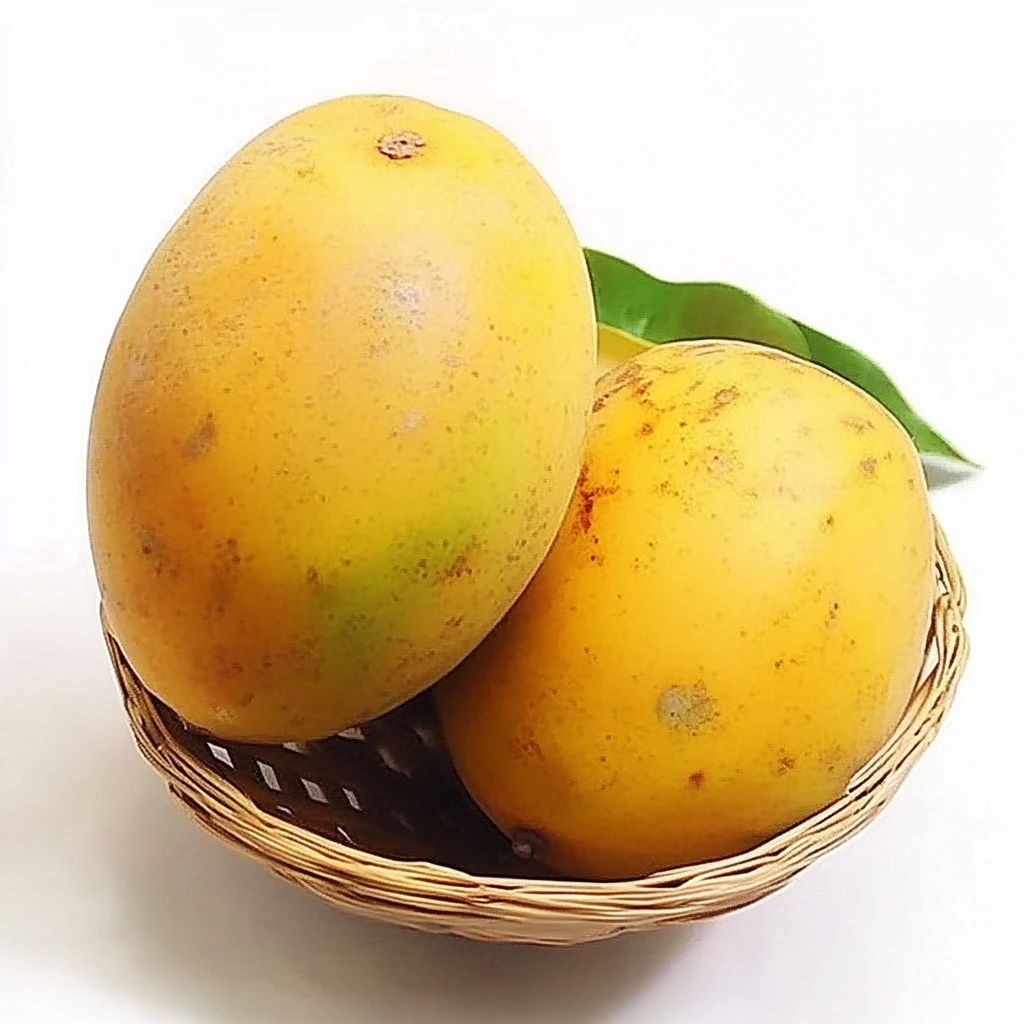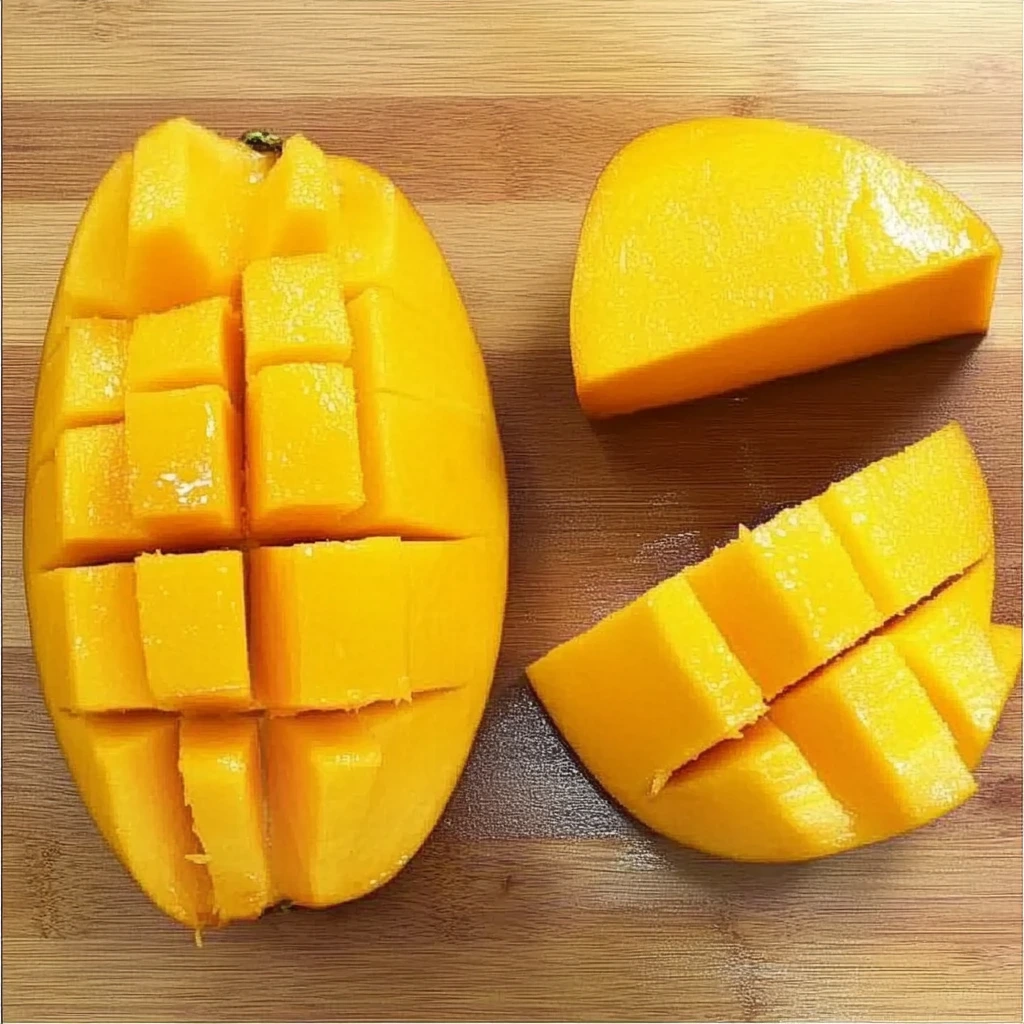Hi, I’m Adalynn — welcome to my little corner of the kitchen! Today, I’m sharing one of my absolute favorite drinks that brings sunshine into any glass: mango juice. My love for mango juice started during one of my early kitchen experiments, back when I was still figuring out how to hold a knife properly and follow a recipe without burning something. I remember tasting it for the first time — it was thick, sweet, tangy, and instantly refreshing.
That one sip reminded me why I fell in love with cooking. Food isn’t just about following steps — it’s about the experience, the story, and the memories you create with each dish. This mango juice recipe is more than just a summer drink — it’s a little story of trial, learning, and joy from my kitchen to yours. Whether you’re new to homemade juices or simply craving something tropical, I promise this one will be a treat.

Table of Contents

Homemade Mango Juice
- Total Time: 10 minutes
Ingredients
-
2 ripe mangoes (peeled and chopped)
-
1½ cups coconut water or orange juice
-
2 tbsp sugar or honey (optional)
-
Ice cubes
-
1 tsp lemon juice
-
Optional: chia seeds, mint leaves
Instructions
-
Add chopped mangoes to a blender.
-
Pour in coconut water or juice of choice.
-
Add sweetener, ice, and lemon juice.
-
Blend until smooth and adjust thickness.
-
Serve chilled, topped with chia seeds or mint if desired.
- Prep Time: 10 mins
- Cuisine: Indian, Global
Nutrition
- Serving Size: 2
Health Benefits of Mango Juice
What Makes This Tropical Drink So Good for You?
This vibrant tropical beverage isn’t just delicious—it’s also loaded with essential nutrients. It’s rich in vitamin C, which strengthens the immune system, and vitamin A, which supports eye and skin health. Naturally occurring antioxidants help fight inflammation, while potassium contributes to balanced blood pressure.
If you’re using fresh mangoes rather than processed versions, you’ll also benefit from the fiber content, which supports digestion and gut health. Plus, the natural sweetness of ripe fruit means you can enjoy it without added sugar.
Enjoyed in moderation, this fruit-based refreshment can be a flavorful way to stay hydrated and energized—especially during warmer months.
Is Mango Juice Good for You?
Absolutely. When made fresh at home without preservatives or high-fructose corn syrup, mango juice becomes a nutrient-rich beverage that boosts your overall well-being. Here’s why it’s good for you:
| Health Benefit | Description |
|---|---|
| High in Antioxidants | Helps fight free radicals, promoting healthy aging and reducing inflammation. |
| Boosts Immunity | Thanks to its high vitamin C and A content. |
| Supports Digestion | Contains digestive enzymes like amylase, which break down food more efficiently. |
| Promotes Eye Health | Vitamin A contributes to better vision and reduces the risk of eye disorders. |
| Hydration | Replenishes fluids and keeps you refreshed, especially in hot weather. |
Fresh vs. Store-Bought – Why Homemade Is Better
Making your own mango-based drink at home allows you to avoid the added sugars, preservatives, and artificial flavors often found in packaged options. With homemade versions, you enjoy the pure taste of ripe mangoes—naturally sweet, slightly tangy, and bursting with freshness.
The best part? You have full control over what goes into your glass. Whether you’re cutting back on sugar or experimenting with flavor add-ins like mint or citrus, preparing it yourself makes for a healthier and more budget-friendly choice.
Nutritional Breakdown of Mango Juice (Per Serving)
| Nutrient | Approximate Value |
|---|---|
| Calories | 160–180 kcal |
| Carbohydrates | 35–40 g |
| Sugars (Natural) | 30–34 g |
| Fiber | 3–5 g |
| Vitamin C | 70–80% DV |
| Vitamin A | 30–40% DV |
How to Make Mango Juice (Step-by-Step)
Choosing the Right Mangoes for the Best Juice

The key to a truly flavorful tropical drink is choosing the right mango. Look for ripe varieties like Alphonso, Kent, Ataulfo, or Kesar, all known for their rich taste and natural sweetness. Ripe mangoes should feel slightly soft and have a fragrant aroma near the stem. Avoid ones that are too stringy or overly sour unless you’re going for a tangier flavor profile.
If you’re making this drink outside of mango season, you can also use frozen pulp. Just make sure it’s 100% pure fruit with no added sugars or preservatives for the best taste and nutritional value.
Ingredients You’ll Need
To make two refreshing servings of this tropical drink, you’ll need:
- Optional add-ins: soaked chia seeds, sabja seeds, or fresh mint for flavor and nutrition
- 2 to 3 ripe mangoes (about 2 cups of chopped pulp)
- 1 to 1½ cups of cold water, coconut water, or fresh orange juice
- 2 tablespoons of sweetener: sugar, honey, or maple syrup (optional)
- Ice cubes (optional, for serving)
- A splash of lemon juice for brightness
Step-by-Step: How to Make Mango Juice at Home

- Wash and peel the mangoes thoroughly. Slice and scoop the flesh from the pit.
- Blend the mango flesh in a high-speed blender.
- Add liquid of your choice—plain cold water, fresh orange juice, or coconut water—to adjust the consistency.
- Sweeten with sugar or honey, only if needed. If your mangoes are sweet enough, you can skip this.
- Blend again until the mixture is silky smooth. You can strain it through a sieve for a pulp-free version.
- Stir in lemon juice for brightness, or chia seeds for added fiber and nutrition.
- Serve chilled with ice cubes or refrigerate for later.
Make-Ahead Tip: Freeze Your Mango Pulp
Blended mango pulp can be frozen in ice cube trays and stored for up to 12 months. When you’re ready for a fruity refreshment, just blend a few frozen cubes with your preferred liquid—instant tropical goodness in seconds!
Pro Tips from Adalynn’s Kitchen
- For an extra flavor boost, try blending mango with freshly squeezed orange juice.
- Skip milk unless you’re making a smoothie, as the fruit’s acidity may cause curdling.
- For a lighter, more hydrating option, swap in tender coconut water.
- If you’re serving it alongside spicy foods, consider adding fresh mint or a touch of ginger for a refreshing herbal balance.
Don’t miss our homemade orange juice recipe for another vibrant, vitamin-packed beverage.
Mango Juice Mixes – What Goes Well With Mango?
Best Fruits and Juices to Mix with Mango Juice
This tropical drink is incredibly versatile and blends well with a variety of other fruits and beverages. Whether you’re aiming to enhance the nutrition, adjust the sweetness, or explore exciting new flavor combinations, these pairings are some of the best to try:
| Pairing Ingredient | Flavor Result | Why It Works |
|---|---|---|
| Orange Juice | Sweet, citrusy, energizing | Adds tang and vitamin C boost |
| Pineapple Juice | Tropical, sweet-sour combo | Enhances mango’s tropical vibe |
| Coconut Water | Light, hydrating, subtly sweet | Balances heat and adds minerals |
| Lemon or Lime Juice | Tart and zesty | Cuts sweetness and refreshes |
| Banana | Creamy, smoothie-like texture | Perfect for breakfast blends |
| Mint or Ginger | Cool and aromatic | Adds a refreshing or spicy kick |
Mango Juice Smoothie Ideas
Turn your mango juice into a power-packed smoothie by blending it with fresh bananas, Greek yogurt, and a handful of spinach for an extra boost of nutrients and flavor.
- Mango + Banana + Yogurt: Great for breakfast with protein and probiotics.
- Mango + Orange + Spinach: A green smoothie that’s rich in iron and vitamin C.
- Mango + Coconut Milk + Chia Seeds: A dairy-free energy drink with omega-3s.
If you’re blending for kids, avoid citrus if they’re sensitive to tart flavors and skip ginger or mint for a milder taste.
Creative Add-Ins to Boost Flavor
Want to give your mango juice an edge? These ingredients make a big difference in both flavor and health benefits:
- Soaked Sabja Seeds (Basil Seeds) – Add texture and aid digestion
- Honey or Maple Syrup – Natural sweeteners with added nutrients
- Turmeric Powder – Anti-inflammatory and boosts immunity
- Cinnamon or Cardamom – For a warm, exotic twist
- Frozen Mango Cubes – Double the flavor without diluting
What’s the Difference Between Mango and Mango Juice?
Whole Mango vs. Mango Juice: Nutritional Differences
While mangoes and mango juice come from the same delicious fruit, they’re not nutritionally identical. Whole mangoes contain more fiber, which plays a major role in digestion and blood sugar control. When mangoes are juiced, much of the fiber is lost—especially if the juice is strained. However, the juice still retains key nutrients like vitamin C, A, and potassium.
| Nutrient | Whole Mango (1 cup) | Mango Juice (1 cup) |
|---|---|---|
| Calories | 100–120 kcal | 130–160 kcal |
| Fiber | 3–4g | <1g (unless unstrained) |
| Vitamin C | 67% DV | 70–80% DV |
| Vitamin A | 35% DV | 30–40% DV |
| Sugar (natural) | 23g | 28–32g |
Texture, Taste, and Culinary Use
- Texture: A whole mango is fibrous and chewy, while mango juice is smooth and pourable.
- Taste: Juice tastes slightly more concentrated, especially when chilled or blended with other ingredients.
- Use: Mangoes are eaten raw, added to salads, or used in desserts. Mango juice, on the other hand, is typically consumed as a drink, added to smoothies, or even frozen into popsicles.
Which Is Better?
Both have benefits, depending on your needs. If you want more fiber and fewer calories, whole mango is the way to go. If you need a quick, refreshing, and hydrating option, mango juice fits the bill.
Storing, Freezing & Serving Mango Juice Year-Round
How to Store Fresh Mango Juice
If you’ve made a big batch of mango juice, proper storage helps maintain its taste and nutrients. Here are the best ways to store it:
- Refrigerator: Store in a glass jar or airtight bottle. Fresh mango juice will stay good for up to 3 days when chilled.
- Avoid Plastic Containers: They can absorb flavor and may leach chemicals into acidic juices.
- Shake Before Serving: Natural separation is normal. Just shake the bottle gently before pouring.
Freezing Mango Juice for Later Use
Want mango juice in the middle of winter? Freeze it! Here’s how to do it properly:
- Make a mango puree using fresh mangoes. Skip sugar or extra liquid if you plan to store long-term.
- Pour into ice cube trays and freeze.
- Once frozen, transfer cubes to a zip-lock freezer bag and label with date.
- To serve later, blend 4–5 cubes with water, coconut water, or orange juice.
Frozen mango pulp lasts up to 12 months, making it easy to enjoy fresh juice all year long.
Creative Ways to Serve Mango Juice
Whether you’re serving guests or just treating yourself, here are some exciting ways to enjoy mango juice:
- With Chia Seeds: Soak chia seeds in water and stir them in just before serving.
- As Mango Coolers: Add sparkling water, crushed ice, and a mint leaf garnish.
- As Frozen Popsicles: Pour juice into molds and freeze for a fruity summer snack.
- With a Tropical Twist: Blend in a splash of coconut cream and lime juice.
Is Mango Juice Good for Digestion and Gut Health?
How Mango Juice Supports Digestive Health
Yes, mango juice is good for digestion—especially when made fresh with fiber-rich pulp. Mangoes naturally contain digestive enzymes like amylase, which help break down complex carbohydrates into simpler sugars. These enzymes can ease digestion and reduce bloating after meals.
When you leave the juice unstrained or include soaked chia seeds or sabja seeds, you add fiber that supports gut movement and prevents constipation. Plus, mango juice hydrates the body, which is key to keeping your digestive system working smoothly.
Balancing Heat with Cooling Ingredients
Mangoes are considered a “heaty” fruit in Ayurveda, which means they can increase internal body heat when consumed in excess. But the good news is—you can balance that effect with ingredients like:
- Coconut water: Cools the body and adds electrolytes
- Mint leaves: Soothe the stomach and freshen breath
- Lemon juice: Adds a cooling effect while aiding digestion
- Soaked chia or sabja seeds: Help regulate heat and promote satiety
These add-ons not only improve the flavor but also turn mango juice into a gut-friendly, cooling tonic for hot days.
Mango Juice as a Pre-Meal or Post-Meal Option
- Pre-meal: Drink a small glass 30 minutes before meals to awaken your appetite and prime your stomach.
- Post-meal: Enjoy after a light meal to help process food better and soothe any heaviness.
Revised Section: Mango Juice and Milk — Can They Be Mixed?
Is It Safe to Mix Mango with Milk?
This is a common question—and the answer is: it depends. Sweet, ripe mangoes can safely be combined with fresh milk, which is how traditional mango milkshakes are made. But if the fruit is slightly sour, combining it with dairy may cause curdling or digestive issues.
Juice, especially when it contains citrus like lemon or orange, is generally not ideal to mix with milk due to acidity. It’s better to enjoy each separately or use alternatives.
Dairy-Free Alternatives to Try
Craving a creamy mango-flavored drink? These options offer smooth textures and pair beautifully:
| Ingredient | Why It Works |
|---|---|
| Coconut Milk | Tropical flavor and creamy consistency |
| Almond Milk | Nutty, light, and smooth |
| Oat Milk | Naturally sweet and rich |
| Greek Yogurt | Thick texture, packed with protein |
These dairy-free alternatives are gentle on the stomach and won’t react poorly with tropical fruits.
How to Make a Creamy Mango Beverage
If you’re aiming for a thicker, smoothie-like result, use blended pulp rather than strained juice. Pair it with your choice of milk (dairy or non-dairy), sweeten lightly, and skip acidic ingredients like citrus to prevent curdling.

Revised Conclusion
This vibrant tropical drink is more than just refreshing—it’s also nourishing and simple to make. Whether served straight from the blender, paired with other fruits, or turned into a frozen treat, mango-based beverages are a flavorful way to stay hydrated and energized. With a few ripe mangoes and the right liquid, you’re just moments away from a sunshine-filled sip.
For more recipes follow me in Facebook
FAQS
Is mango juice good for you?
Yes, mango juice is good for you—especially when made fresh without added sugars or preservatives. It’s loaded with vitamin C, which strengthens immunity, and vitamin A, which supports healthy skin and vision. Its natural antioxidants help combat inflammation, while its enzymes aid digestion. Plus, it’s hydrating and a tasty alternative to sugary sodas or packaged drinks.
How to make mango juice?
To make mango juice at home:
Peel and chop 2 ripe mangoes.
Blend them with 1–1½ cups of water, coconut water, or orange juice.
Sweeten with honey or sugar if needed.
Add optional lemon juice, chia seeds, or mint for extra nutrition and flavor.
Serve chilled over ice or store in the fridge for up to 3 days.
What juice goes well with mango?
Mango pairs well with several other juices that enhance its natural sweetness and tropical flavor. Great combos include:
Orange juice – balances sweetness with tanginess
Pineapple juice – adds depth and tartness
Coconut water – lightens the texture and hydrates
Lemon or lime juice – brings a zesty kick
Carrot juice – adds earthy sweetness and beta-carotene
What is the difference between mango and mango juice?
The main difference lies in fiber content and texture. Whole mangoes are fibrous, chewy, and offer more dietary fiber. Mango juice, especially if strained, loses much of that fiber but retains vitamins and natural sugars. Mango is a solid fruit eaten raw or used in cooking, while mango juice is typically consumed as a beverage—on its own or blended with other ingredients.
Is mango juice good for digestion?
Yes, mango juice contains natural digestive enzymes like amylase that help break down carbohydrates and improve gut function. It also hydrates and can reduce bloating. For best digestive benefits, use fresh mango pulp, avoid added sugars, and mix in chia seeds or mint for a soothing touch.
Can mango juice be mixed with milk?
Only if you’re using sweet, non-acidic mangoes and fresh milk. Mango milkshakes are a common example. However, mixing mango juice (especially if it contains citrus or is slightly sour) with milk can cause curdling. For a creamy drink, opt for plant-based milks like almond or coconut, or use mango pulp directly instead of juice.

